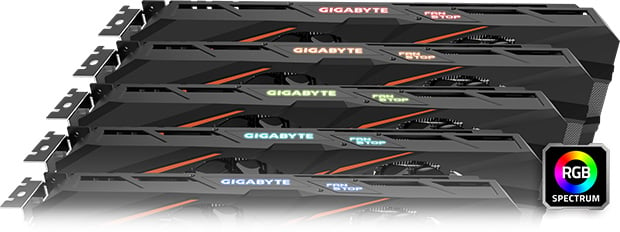ASUS And Gigabyte Already Teasing Custom GeForce GTX 1060 Boards
Starting with ASUS, you can expect several custom versions of the GeForce GTX 1060, three of which it teased on its Republic of Gamers Facebook page. They include the Turbo, Dual, and ROG Strix. Have a look.
Moving on to Gigabyte, the company is prepping its GeForce GTX 1060 G1 Gaming graphics card. What makes the G1 Gaming version different from the reference design is a combination of a "Super Overclocked GPU" and Gigabyte's signature Windforce cooling technology. The G1 Gaming model also sports RGB illumination for a touch of requisite bling.

Gigabyte's card will use the Windforce 2X cooling system. Underneath the fancy name are dual 90-millimeter alternate spinning fans with a unique blade design and two composite copper heat pipes that make direct contact with the GPU. The card is passively cooled and silent both at idle and during low load situations, with the fans kicking on as needed.
We don't have information on what clockspeeds the GPU and memory will run at, though Gigabyte does tout a 6+1 phase design compared to the reference design's 3+1 power phase. That will make the MOSFET work on a lower temperature to provide more stable voltage output and better overclocking performance, Gigabyte says. There will also be a one-click overclocking option through Gigabyte's Xtreme Engine utility.
Finally, Gigabyte promises its G1 Gaming card will have the highest grade chokes and capacitors. Use of premium components add to the durability of a graphics card for a better shot at a longer lifespan than cards that use cheaper parts.

Source: Videocardz.com
Finally, we've also seen pictures of Inno3D's iChill GTX 1060 X3 on the web. The iChill card will bring an 8-pin PCIe power connector to the Pascal party (probably not uncommon among custom GeForce GTX 1060 cards), along with a slightly higher GPU boost frequency (1,784MHz versus 1,708MHz) and a decent memory clock bump (8,200GHz versus 8,000GHz).
The GeForce GTX 1060 in reference form will be available starting July 19. It probably won't be long after when we begin to see the above custom cards, as well as those from other players. In the absence of MSRPs from NVIDIA's hardware partners, we'll have to wait and see how much these cards end up costing.

